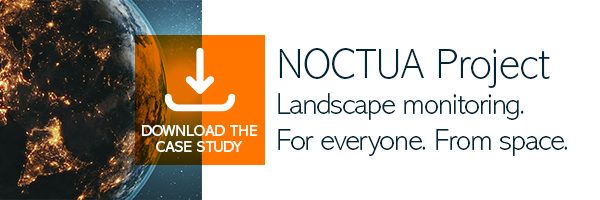Natural disasters have always posed a serious threat to the safety of people and the stability of infrastructure, causing considerable damage and loss. The recent increase in the frequency and severity of such events has highlighted the need for better disaster management strategies. In this context, the use of technology is crucial.
But what are the most effective tools for preventing and managing natural disasters?
IoT, smartphones and social media
The Internet of Things (IoT) is a promising solution for detecting and managing natural disasters. For example, to provide early warning, IoT sensors can be used to monitor environmental parameters such as temperature, humidity, and seismic activity. This technology also extends to critical infrastructure such as power grids and water systems, providing a detailed picture for targeted intervention. For example, sensors can be used to find places where landslides or floods are likely to occur, detect structural deterioration of a building, or predict when a bridge or tunnel might collapse. This information can be sent to smartphones and other devices, allowing residents and rescuers to prepare for an evacuation.
At the same time, smartphones and social media play a vital role in real-time communication and coordination of rescue efforts. Collecting detailed incident information via mobile devices, such as the number of injured and the extent of damage, acts as an early warning system and facilitates the location of affected sites.

In this way, IoT sensors, smartphones, and social media can revolutionize disaster relief operations by providing widespread access to information and facilitating communication between those who need help and those who can provide it.
Remote sensing and satellite imagery
Remote sensing is a technology that uses satellites or aircraft to monitor an area and collect data on the extent and severity of a disaster and its impact on the environment and infrastructure. The technology can identify areas at risk in advance and produce maps and models that show the extent of damage, helping decision-makers to prioritise response and allocate resources effectively. For example, remote sensing can be used to identify areas where a tsunami could be generated by underwater landslides, enabling early warning and subsequent evacuation of vulnerable populations.
Melting glaciers, changes in vegetation, and the effects of climate change in general can also be monitored using satellite imagery, and the information gathered can be used to develop adaptation strategies.
Remote sensing is therefore crucial for planning rescue operations, providing emergency aid, and organising disaster response teams.

AI and blockchain
Artificial intelligence also promises significant advances in the prediction of natural disasters. By analysing changes in soil composition, vegetation density or water levels, AI can detect early warning signs and provide crucial information for disaster preparedness. This enables authorities to take preventive measures, such as planning evacuations in good time, fortifying vulnerable areas, and implementing effective containment strategies.
In addition, by monitoring and analyzing data from weather stations, sensor networks, and social media platforms, artificial intelligence algorithms can quickly identify emerging risks, provide situational awareness, and improve the coordination of response efforts and community safety.
A key advantage of blockchain technology is its ability to create decentralised platforms for information sharing. Unlike traditional centralised systems, which often face security, reliability, and accessibility challenges during emergencies, blockchain creates a secure network. Here, disaster information can be securely stored and shared between authorised parties, enabling timely access to accurate information.

Benefits and challenges of using advanced technologies
There are three main benefits of using advanced technologies in disaster management:
-
Speed and efficiency of response. New technologies provide specific information on the extent and severity of damage caused by natural disasters. This helps responders to prioritise actions and optimise resource allocation.
-
Real-time monitoring. IoT devices provide real-time information on the status of critical infrastructure. This allows areas in need of assistance to be identified immediately and actions planned accordingly.
-
Accuracy of collected data. New technologies are improving the accuracy and reliability of data collected during natural disasters. For example, satellites and remote sensing provide high-resolution images of affected areas, allowing for a more accurate assessment of damage.

However, there are limitations to the use of such advanced tools. The cost of implementation and maintenance can be prohibitive for some communities and contexts. In addition, the demand for technical expertise may be difficult to meet in some areas. Furthermore, the use of new technologies still poses many challenges: if data collection and analysis methods are not standardised, it can be difficult to compare data from different places and times, making it harder to find effective response plans; the rapid evolution of technology brings new solutions and applications, making it difficult for emergency responders to keep up and use them successfully.
In conclusion, land monitoring through advanced technologies offers important benefits in the prevention and management of natural disasters. The adoption of tools such as IoT, smartphones, social media, remote sensing, artificial intelligence and blockchain is helping to improve the effectiveness of emergency response. However, despite the obvious benefits, challenges related to cost, technical training and data standardisation remain significant hurdles that need to be overcome to ensure the optimal application of these technologies, especially in specific economic and geographical contexts.


